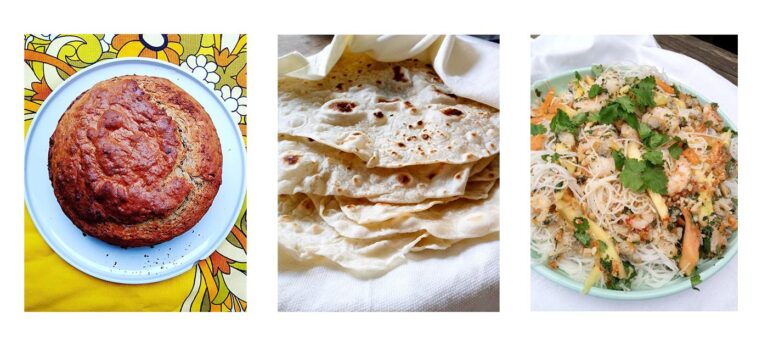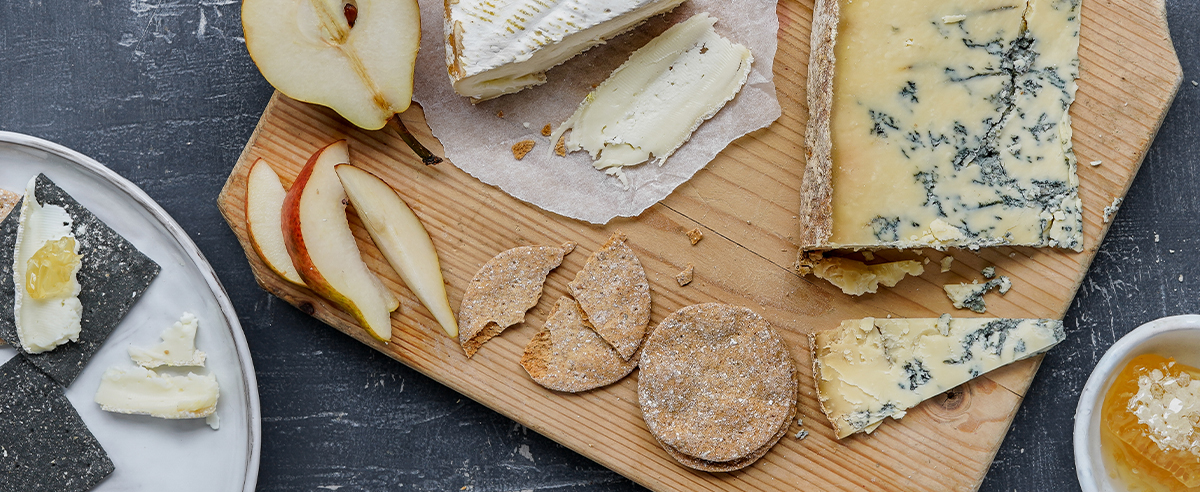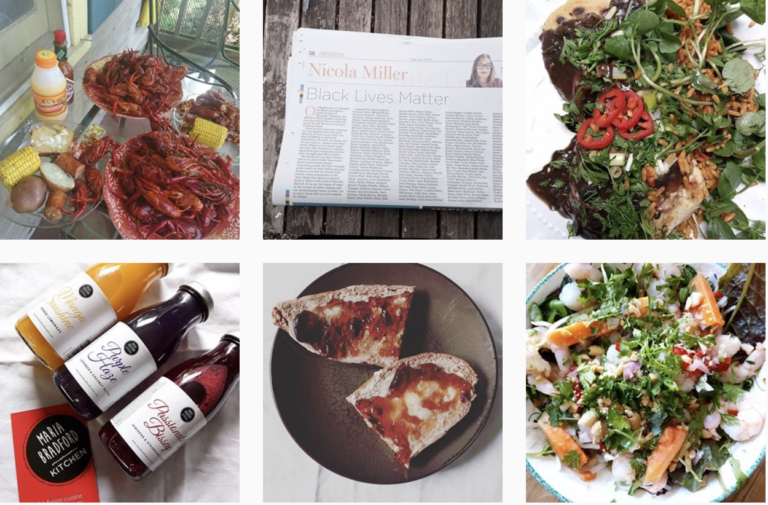We were proud to be sponsors of the ‘Online Food Writer’ category at the Guild of Food Writers Awards in June. The Guild of Food Writers is a professional association based in the U.K, bringing together food journalists, broadcasters and authors – both at Guild events and via the internet.
Due to the current climate the awards were held virtually, which sadly meant we couldn’t meet all of the nominees – however the guild did a fantastic job at making this just a special, with lots of conversation and celebration taking place over social media.
This year, Nicola Miller of “Tales from topographic Kitchens” was the worthy winner of the ‘Online Food Writer’ award and our sponsored category, so we took some time to find out about her career in food writing, her inspirations and recommendations for breaking into the industry.

What are some of your fondest memories in food?
It always circles back to the food I ate in Northern Mexico as a child. My years there were formative, and I am at my happiest when cooking, eating, or writing about Mexican or American food. Tamales puffing with steam like baby dragons, flour tortillas (we lived in the north of the country where these were commonly eaten), the salty-sweet-sour flavours of mango or corn with chilies, salt, and lime.
Holding tacos in the palm of your hand and adopting the ‘taco crouch’ to avoid drips and splashes as you eat. Tamarind candies shaped like witches’ hats, making dahlia wreaths for fiestas and the way everything tasted of their sap for hours afterward, pinto beans (frijoles) on earthenware plates which I called ‘camo beans’ because they merged with the colours and flavours of the clay.
Mexicans say their molcajetes (a pestle and mortar-like grinding tool) possess a soul that imbues every meal, and I feel this way about my Mexican earthenware plates too. I could go on about this for hours and that is before I even get started on regional American food: crawfish boils in Louisiana, cornbread and pot greens in Alabama, conch chowder in southern Florida, gumbo and red beans n rice in New Orleans, picking pecans in Mississippi and sharing them with the farm’s dogs. During Lockdown all I wanted to cook and eat was Mexican or American regional food and relive memories of places and people I could not visit.
Where did your career begin and how did you become interested in food writing?
I have always been interested in reading about food and as a book-obsessed child I became quite fixated on food scenes in novels – I guess I still am. One of my favourite books is ‘The Country Child’ by Alison Uttley, which is a fictionalised account of the author’s childhood growing up on a Peak District farm. Food features heavily with glorious descriptions of pikelets, the crisp apple in her Christmas stocking, and good, regional farmhouse cooking which nonetheless does not skate over the trials and tribulations of life on a farm. I am not a fan of the overly bucolic and Uttley’s writing has been an influence in this way.
For a long time, I worked in the field of mental health and when I left, part of the way I coped with the change was by writing. I was also a member of several food-related Internet forums where I got to interact with others of like mind. One of my favourites was Ebay’s ‘Cooks Nook’ which sadly is no more, although I remain friends with many forum members. For someone like me who was-and is- fascinated by American food culture, it was a treasure trove.
After a lifetime of reading about food and collecting books on the subject (I have thousands!), I thought I might finally be ready to put some thoughts on paper. I started a blog (which did not focus solely on food) and contacted my local paper asking if they might be interested in my writing a column for them. This progressed to features then finally the monthly food column I write to this day. I also started Tales From Topographic Kitchens, a newsletter where I collate my favourite food writing and media by other people, loosely arranged around a theme. This is the newsletter which won me Best Online Food Writer 2020 from the Guild of Food Writers, and it is the award Peter’s Yard sponsor. Occasionally I write for other publications, but I hate pitching for work!
How important do you think it is to remain authentic to your craft within an age of social media influencers?
This is a difficult one to answer because much of what I do relies on instinct although I do keep an eye on what other people in the food world do and that helps me decide how far – if at all – I should go down this path. My take is that I try to only mention goods and services that I pay for and use myself and would recommend because I love them, and I have not taken payment for a recommendation-ever. It is a big responsibility because money is tight for so many people and I would feel embarrassed to be paid to recommend something simply because of a fiscal relationship with the supplier of said goods, irrespective of their quality.
I often recommend books (about 80% of which I buy myself and the rest are sent by publishers as review copies and I recommend only a small proportion of those) and foodstuffs of which Peter’s Yard crispbreads was one because 1. I like them a lot and buy them myself too and 2. Peter’s Yard is a Guild sponsor in a year (2020) which has proved enormously challenging for people in the food business. I wanted to thank the company for their continued sponsorship, and I acknowledged this relationship fully in my posts. That is really all you can do. Be honest and transparent and make the decision early on about which way you want to go.
Who are your food inspirations and why?
Generous, inclusive people inspire me; the writers, chefs and cooks who acknowledge their own hinterlands and do not hog all the attention for themselves. Nigella has been a big influence and an enormous support; she always credits her sources which has made me a better and more-informed reader and writer. I adore her work; its intelligence and blend of pragmatism and pleasure and I can’t wait to read her new book.
I loved MiMi Aye’s approach in her cookbook ‘Mandalay’ which focuses on her Burmese roots and her amazing food. She also possesses a great sense of playfulness which we need more of in food. It can get a bit earnest otherwise. The same applies to Laura Goodman who wrote ‘Carbs’ and is another writer who sparks joy.
Maria Bradford of “Maria Bradford Kitchen” writes about and cooks food from her native Sierra Leone and is not afraid of modernising and innovating. Her social media always makes me think about food in a fresh way and Yemisi Aribisala who wrote ‘Longthroat Memoirs’ is a stunningly sensual and vivid writer whose words I never tire of reading.
I love American food writing too: James Villas who was from North Carolina wrote witty essays about such things as lettuce, mayonnaise and what chefs really eat; Lolis Eric Elie writes about food through the lens of southern culture in all its complexity and pain; Cathy Barrow’s pie books are a go-to comfort read (and bake!). Then there’s Ronni Lundy on the food and culture of Appalachia (which, when you live in a rural part of the UK has real resonance), Toni Tipton Martin on Black American food history (and amazing recipes), and Gustavo Arellano on Mexican-American food culture. There are too many to mention here but my newsletter is a good way to broaden your reading. There are lots of recommendations in it.
In the UK, I admire Felicity Cloakes’s meticulous recipe deconstructions for The Guardian because I am not a meticulous person at heart. Rachel Roddy is one of the most beautiful and lyrical writers of all, telling stories about Italy and centering its people which is rarer than you think because something seems to come over British food writers when they go to Italy and their reveries overtake the reality. Jonathan Nunn’s newsletter ‘Vittles’ is a must and Sejal Sukhadwala who is currently compiling an Indian food dictionary writes so beautifully on food and has one of the best Twitter accounts. I can rely on her to inspire in me a fresh train of thought.
What would your recommendations be to someone who is looking to break into food writing / blogging?
Do not expect to make an excellent living from it, especially at the start. The “starving writer in a garret” is not a myth sadly. Have another job and remember it does not matter what that job is. Writers need to be in the world, not shut away in front of a laptop.
I work as a writer, researcher and consultant in mental health education and health promotion which allows me to write my newsletter and blog in my free time. It also gives me fresh perspectives and keeps me grounded. I have also worked as a pub chef and cook both as a young woman and more recently as a fifty-something.
Read a lot and not just about food. Think about what makes a piece compelling or why you did not get on with it. Do not try to write like someone else but do experiment with different prose styles which will help you develop and inhabit your own voice.
Think about what you want to say. Think about your values with respect to this. The food media is a community of people and it is not homogenous; which aspects of it chime with you and which do not?
Start a newsletter or blog, vlog etc – get yourself out there. Make sure you take time to exercise, get on social media and have conversations. Try not to let your social media be all about you and your writing. Make friendships based not on what someone can do for you; be genuine. Support others, uplift and platform people who lack your advantages. Try to avoid snobbery in food. People eat what they eat for all kinds of complex reasons and the best food writers understand this and see a story within it. Try not to divorce eating and food from the systems which enable – or harm- them.
Learn how to write a good pitch. There is a lot of advice online and quite a few editors and publications publish detailed guidelines about what they are looking for. If you can afford it, attend a reputable how-to-pitch class. Many are online and once you are starting to make money via your work in food media, consider joining the Guild of Food Writers. I have found their support invaluable.
And lastly, just write! Just start writing. This is the advice I forget the most. Sometimes the planning of a piece is more scintillating than the actual writing of it. Don’t get trapped by this.
You can find Nicola on Instagram @millerstale or on her blog: nicmillerstales.com/tiny-letter/


